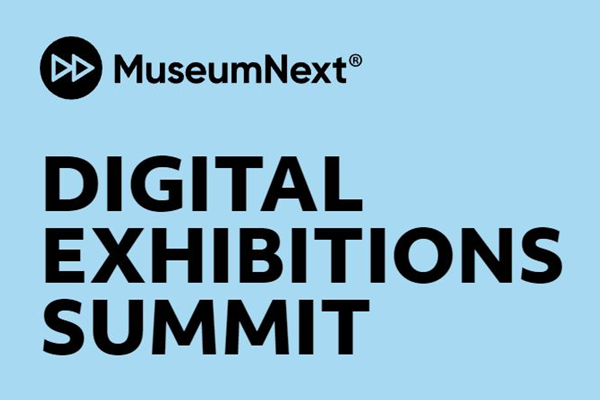
The online MuseumNext Digital Exhibitions conference in December focused on how to incorporate digital into your exhibitions. Alex Morrison from Cogapp shared an insightful presentation, ‘10 Great Online Exhibition Ideas.’
“It’s really all about content,” he said. Your content is already great – how can you share and enhance it?
One of the first things you can do is make a simple video tour of your galleries, with a curator presenting the exhibits. On a higher level is a virtual tour – a simulation usually composed of a sequence of images. Virtual reality (VR) is now easier using products like Matterport. You can enrich the tour with label content. Expanding that idea is 360° video, which is not so complicated. Nowadays, 4K spherical VR cameras are relatively inexpensive.
Video and rich media are aspects of online exhibitions, but images are really “the bedrock,” according to Alex. For example, on the Visual Commentary on Scripture website you can zoom in deeply on images, to the extent that you can see brushstrokes. This experience uses the International Image Interoperability Framework (IIIF), “the gold standard for handling images,” which can enrich the visual experience of your online exhibitions.
You can turn IIIF images into an interactive story using a feature called Manifest. You select parts of an image, write captions, and sequence them into a story. Cogapp provides a free online storytelling platform called Storiiies.
Images can also have audio commentary. You should provide transcripts of the commentaries for accessibility reasons and indexing by search engines. Audio transcription software like Trint can transcribe audio automatically to a decent standard, and you can rapidly tidy up any faulty text.
Alex then spoke about one of the cleverest things he’s seen: combining music with works of art. Doing it online is difficult for copyright and interface reasons. So you can use a streaming service like Spotify, which “finesses both the rights issues and interface issues.” Music can be played in gallery or online, and is entirely optional for the visitor.
Another option is screensavers. Admittedly, these are rather old-fashioned, but are “very lovely and not difficult to produce.” You can create them with systems like iScreensaver.
Most museum websites have a donate button, but very few online exhibitions have a specific call-to-action to say, “Donate to help us do more of this.” Alex cited AddThis, a simple tip jar system.
Alex then explained how to pull these individual tools together to make a whole experience.
The first option is Google Arts & Culture, which provides a complete toolset and can produce online exhibits. It’s “very swish and all free.” Although it doesn’t generate an enormous audience, it’s a good way of getting into online exhibitions. The price you pay for it being free, though, is that “you sacrifice some branding.”
Beyond that, you can build one-off websites, or do what the University of Edinburgh did. They wanted something more extensive, so Cogapp built them an online ‘exhibition factory’ including many of the tools mentioned earlier. The University can produce multiple exhibitions without the need for recoding. The image presentation is “lovely” and there are lots of ways of getting labelling. Storiiies can also be incorporated.
Alex summarised the options:
- Make a VR tour.
- Make a video tour or 360° video.
- Provide high-resolution deep-zoom images.
- Turn images into interactive stories.
- Provide audio with transcription.
- Provide a soundtrack using playlists.
- Offer digital merchandise (free or paid).
- Provide a tip jar for donations.
- Make an online exhibit.
- Build a reusable exhibition factory.
[…] Read about digital exhibition ideas […]